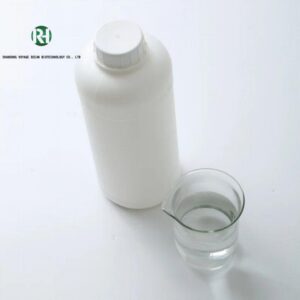Products
With an outstanding track record and unwavering commitment to excellence, they consistently deliver the highest quality products to various industries.
6485-40-1|L-Carvone
6485-40-1|L-Carvone
The given information is a chemical compound with the identifier 6485-40-1, which is known as L-Carvone.
Products Description
6485-40-1|L-Carvone
The number 6485-40-1|L-Carvone refers to the chemical compound L-Carvone. Carvone is a naturally occurring organic compound that belongs to the class of terpenoids. It is commonly found in many essential oils, particularly in spearmint and caraway oils. L-Carvone is the specific enantiomer of carvone that possesses a distinct aroma and flavor profile.
L-Carvone has a molecular formula of C10H14O and a molar mass of 150.22 g/mol. It is a clear liquid with a characteristic odor reminiscent of mint or spearmint. The compound has a boiling point of approximately 231-232 °C and a melting point of around -45 °C.
L-Carvone finds various applications in different industries. In the food and beverage industry, it is often used as a flavoring agent, providing a refreshing and cooling sensation to products like chewing gum, candies, and toothpaste. Its minty taste makes it a popular choice in confectionery and culinary preparations.
Apart from its flavoring properties, L-Carvone also possesses several medicinal and therapeutic benefits. It is known for its antiparasitic, anti-inflammatory, and analgesic properties. L-Carvone has been used in traditional medicine to treat various ailments such as indigestion, flatulence, and colic. Additionally, it has shown potential in insecticidal and insect repellent applications.
The production of L-Carvone typically involves the extraction of carvone from natural sources such as spearmint or caraway plants. It can also be synthesized through chemical processes, mainly employing the isomerization of limonene.
In conclusion, 6485-40-1|L-Carvone is a chemical compound with diverse applications. Its distinct aroma, flavor, and therapeutic properties make it a valuable ingredient in various industries, ranging from food and beverages to pharmaceuticals and personal care products.





